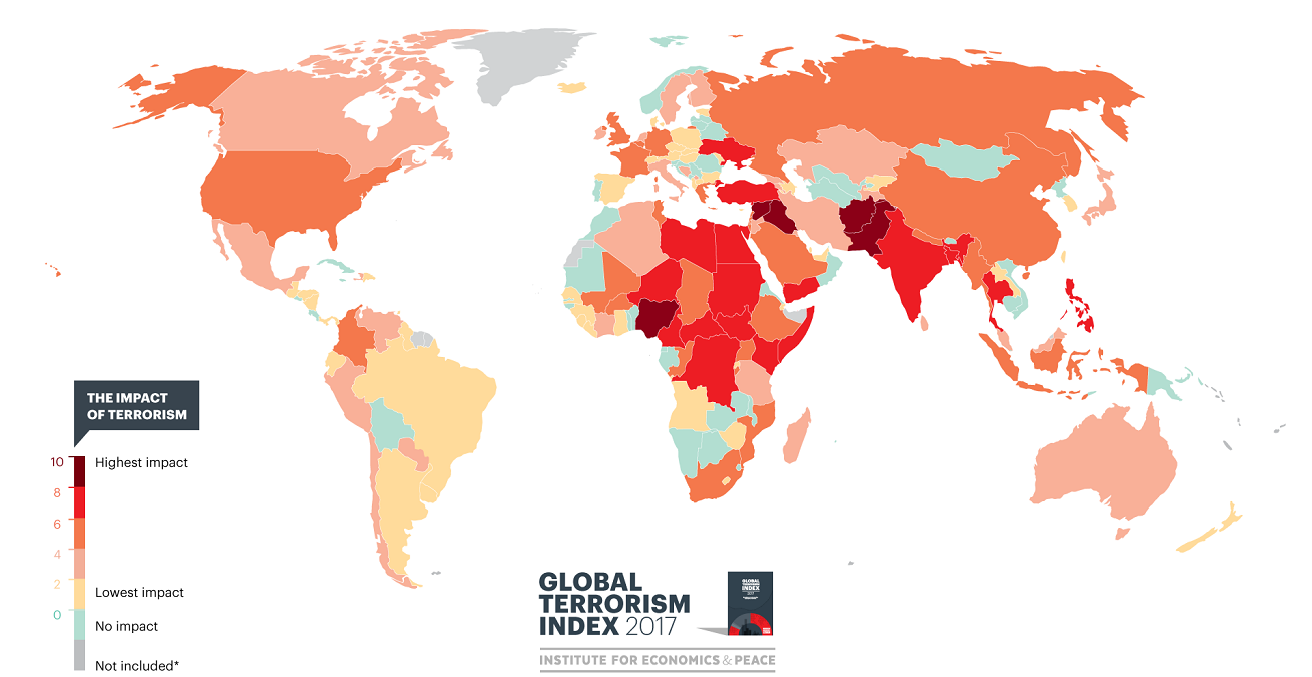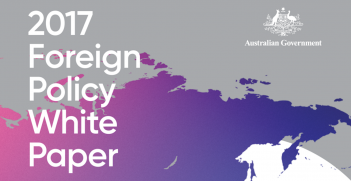Terrorism Spreading But Less Deadly in 2017

This year’s Global Terrorism Index, released this week by the Institute for Economics and Peace, indicates a significant shift in the tactics employed by terrorist groups and a complex new challenge for security and intelligence services.
The fifth edition of the Global Terrorism Index (GTI) was released this week. The report provides a comprehensive summary of the key global terrorism trends and the key findings hold some positive news. For the second consecutive year, deaths from terrorism have decreased and there has been a 22 per cent decrease since the peak of terror activity in 2014, when more than 32,500 people were killed.
The annual index, which is produced by Australia’s Institute for Economics & Peace (IEP) analyses the direct and indirect impact of terrorism on 163 countries covering over 99 per cent of the world’s population. It uses data from the Global Terrorism Database, which is collected and collated by the US-based National Consortium for the Study of Terrorism and Responses to Terrorism and other sources.
The 2017 GTI report highlights significant declines in terrorism in the epicentres of Syria, Pakistan, Afghanistan and Nigeria, which are four of the five countries most affected by terrorism. Collectively, these four countries recorded 33 per cent fewer deaths.
However, while the global numbers of deaths and attacks recorded a reduction in 2016, other trends are concerning, with an increased number of countries experiencing at least one death from terrorism. This is more than at any time in the past 17 years and reflects an increase from 65 countries in 2015 to 77 in 2016. Two out of every three countries in the index, or 106 nations, experienced at least one terrorist attack.
The major battlefield defeats of Islamic State (IS) in Iraq and Syria in the 18 months prior to June 2017 signalled the beginning of the end of the group’s long-term territorial ambitions and military strength. As the group has lost territory, it has also suffered a significant loss of revenue, which is estimated to have declined threefold between 2015 and 2016. This decline in revenue is likely to continue throughout the remainder of 2017 and into 2018.
More troubling is the potential for many hardened fighters and leaders to leave Iraq and Syria to join new radical permutations of IS or existing IS affiliates in other countries. This has contributed to a continuation of last year’s trend with an expansion of IS activities into other countries. However, while the number of countries that suffered an IS-directed attack increased from 11 in 2015 to 15 in 2016, six fewer countries suffered an attack from an IS-affiliated group.
In Europe and other developed countries, IS’s activity was the main driver of terrorism. Since 2014, 75 per cent of terrorist deaths in OECD countries have been IS directed or inspired. The year 2016 was the most deadly for terrorism for OECD member countries since 2001. However, IS’s diminishing capacity has coincided with a positive shift in the first half of 2017, with a decline in number of deaths, although this analysis excludes Turkey and Israel.
Associated with this trend was a change in terrorist tactics used in OECD countries. Since 2014, there has been a general shift towards simpler attacks against non-traditional and softer civilian targets. IS-inspired attacks also increased to 68 in 2016 from 32 in 2015. A greater number of attacks were foiled by security services with half of the attacks using bombs and explosives thwarted. Two years ago, only a third of these types of attacks were foiled by security services. These more sophisticated types of attacks involve more people and planning, and therefore are more likely to be detected. Less sophisticated attacks that can be executed at lower cost can be more difficult to detect.
The 2017 GTI report also highlights how terrorism remains unevenly spread throughout the world as illustrated by the map above. Central America and the Caribbean continues to be the least affected region. There were only 12 deaths recorded in 2016, which accounts for less than 0.4 per cent of all terrorism deaths. Meanwhile, 94 per cent of all terrorist deaths are located in the Middle East and North Africa, sub-Saharan Africa and South Asia.
When examining the drivers of terrorism, the presence of armed conflict, political violence by governments, political exclusion and group grievances remain critical factors. The analysis finds that 99 per cent of all deaths over the last 17 years has been in countries that are either in conflict or have high levels of political terror. This shows that the great majority of terrorist attacks are used as a tactic within an armed conflict or against repressive political regimes. It also demonstrates the risks of political crackdowns and counterterrorism actions that can exacerbate existing grievances and the drivers of extremism and terrorism.
To access interactive maps on the Global Terrorism Index and to view the full report click here.
Camilla Schippa is director of the Institute for Economics and Peace, which produces the Global Peace Index each year.
This article has been published under a Creative Commons Licence and may be republished with attribution.





